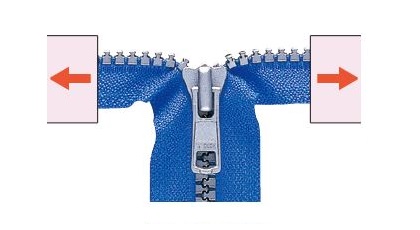How many types of tests are generally divided into the zipper fatigue tester?

Zipper Fatigue Tester is a test equipment used to evaluate the durability and service life of zipper products. It simulates the opening and closing cycle of the zipper in actual use, and through different types of tests on the zipper, its performance and durability during use can be detected. Generally speaking, the zipper fatigue tester can perform the following tests:
1. Open-Close Cycle Test:
Opening and closing cycle test is the basic test method of zipper fatigue test. This test simulates the opening and closing process of the zipper in actual use, and evaluates the durability of the zipper by repeating the opening and closing operation of the zipper. In the test, the zipper sample is fixed on the test equipment, and the equipment simulates the opening and closing action of the zipper through mechanical or electric force. The test can set different opening and closing speeds and cycle times according to requirements to simulate the actual situation under different usage conditions.

2. Tensile Test:
The pull test is used to evaluate the performance of the zipper when it is subjected to pulling force. The pull test can measure the maximum load capacity and breaking strength of the zipper in the vertical direction. In the test, the zipper sample is clamped on the test equipment, and gradually increasing tension is applied until the zipper breaks or reaches the preset breaking standard. This test evaluates the strength and durability of the zipper to ensure that it will not break due to force during use.
3. Lateral Distortion Test:
The Lateral Torsion Test is used to evaluate the performance of a zipper when it is twisted or bent sideways. This test simulates the lateral stress and deformation that a zipper may encounter during use. In the test, the zipper sample is clamped on the test equipment, and a lateral twist or bending force is applied to observe the degree of twist, deformation and deformation of the zipper. This test evaluates the stability and durability of the zipper under lateral stress to ensure that it will work properly in actual use.
4. Fatigue Life Test:
Fatigue life testing is used to evaluate the durability of zippers in long-term cyclic use. This test simulates the continuous opening and closing cycle of the zipper in actual use, and detects the service life and performance changes of the zipper by repeating the opening and closing cycle. During the test, the zipper sample is fixed on the test equipment, and the equipment is cycled according to the preset number of opening and closing cycles and speed, and the performance change, wear and tear of the zipper are observed. This test evaluates the durability and service life of a zipper to determine its suitability for specific application needs.

These are several test methods in the common zipper fatigue test, and different test methods can be combined or adjusted according to specific needs and standards. When performing zipper fatigue testing, appropriate test methods and parameters should be selected according to product characteristics and application requirements to ensure that the quality and performance of zipper products meet expectations. At the same time, it is recommended to refer to relevant standards and guidelines to ensure the accuracy and reliability of the testing process and results.
2023-07-10 10:23


